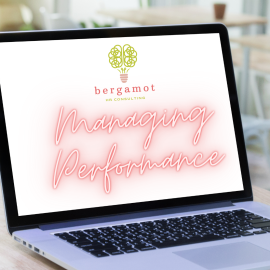
Building The Foundations Of A Positive Workplace Culture
Workplace culture plays a pivotal role in shaping the overall employee experience and organisational success. A positive work culture fosters engagement, productivity, and employee well-being, while a toxic or negative culture can have detrimental effects on individuals and the company as a whole. In this blog post, I will explore the foundations of a positive workplace culture, highlighting its benefits, drawbacks of a toxic culture, the cost implications of investing in culture, and steps to achieve and sustain a positive work environment.
The Power of a Positive Workplace Culture
A positive workplace culture is characterised by shared values, norms, and behaviours that promote collaboration, respect, and employee satisfaction. Such a culture has numerous benefits, including increased employee engagement, higher productivity levels, improved retention rates, and enhanced overall organisational performance. A positive culture also attracts top talent, as job seekers are increasingly prioritising a supportive and inclusive work environment.
On the other hand, a toxic or negative workplace culture can have severe consequences. It can lead to high turnover rates, low morale, decreased productivity, and a negative impact on employees’ mental and physical well-being. Toxic cultures often exhibit behaviours such as micromanagement, lack of transparency, favouritism, and a lack of accountability. These factors can create a hostile work environment, erode trust, and hinder collaboration and innovation.
Cost Implications: Investment vs. Getting it Wrong
✅ Investing in a positive workplace culture may require resources, but the long-term benefits far outweigh the costs. Organisations that prioritise culture see improved employee performance, reduced absenteeism, and lower turnover rates.
Engaged employees are more likely to go the extra mile, resulting in increased productivity and customer satisfaction. Moreover, a positive culture attracts and retains top talent, reducing recruitment and training costs.
❌ On the other hand, the cost of getting workplace culture wrong can be significant. High turnover rates lead to recruitment expenses, loss of institutional knowledge, and decreased productivity during the transition period.
A toxic culture can also result in legal issues, such as discrimination or harassment claims, leading to financial penalties and damage to the organisation’s reputation. Additionally, a negative work environment can hinder innovation and creativity, limiting the company’s ability to adapt and thrive in a competitive market.
Foundations of a Positive Workplace Culture
1. Leadership and Role Modelling: Leadership plays a vital role in shaping the culture of an organisation. Leaders must embody the desired values and behaviours, acting as role models for employees. They should prioritise open communication, transparency, and fairness, setting the tone for a positive work environment.
2. Clear and Shared Values: A positive work culture is built on a foundation of clearly defined values that are communicated and embraced by all employees. These values guide decision-making, behaviour, and interactions within the organisation.
3. Open Communication: A healthy work culture encourages open and transparent communication at all levels. Employees feel comfortable expressing their ideas, concerns, and feedback, fostering a sense of trust and psychological safety.
4. Collaboration and Teamwork: A positive culture promotes collaboration and teamwork, encouraging employees to work together towards shared goals. It values diverse perspectives, encourages knowledge sharing, and recognises the importance of collective achievements.
5. Employee Engagement and Empowerment: Engaged employees are more likely to contribute positively to the workplace culture. Organisations should provide opportunities for employee involvement, empowerment, and decision-making. This fosters a sense of ownership and commitment among employees.
6. Continuous Learning and Development: A positive culture values learning and development, providing employees with opportunities to enhance their skills and knowledge. Organisations should invest in training programmes, mentorship, and career development initiatives, enabling employees to grow both personally and professionally.
Steps to Achieve and Sustain a Positive Workplace Culture
1. Leadership Commitment: Culture change starts at the top. Leaders must demonstrate a genuine commitment to the desired culture and act as role models. They should communicate the importance of the change, align their actions with the desired values, and hold themselves accountable.
2. Set Realistic Expectations and Timelines: Cultural change takes time and cannot be achieved overnight. Organisations often make the mistake of expecting immediate results or setting unrealistic timelines. This can lead to frustration and a lack of sustained effort, ultimately derailing the change process.
3. Clearly Define Accountability: Without clear accountability mechanisms, cultural change efforts can lose momentum. Organisations should establish metrics, reward systems, and regular check-ins to hold individuals and teams accountable for embracing and promoting the desired culture.
4. Assess the Current Culture: Begin by understanding the existing culture and identifying areas that need improvement. Conduct surveys, focus groups, and interviews to gather employee feedback and insights. This assessment will help identify specific issues and areas for growth.
5. Define the Desired Culture: Clearly articulate the values, behaviours, and norms that align with the organisation’s vision and goals. Involve employees in this process to ensure their buy-in and commitment to the desired culture.
6. Align Systems and Processes: Organisations may focus solely on changing behaviours and values without aligning their systems, processes, and policies with the desired culture. If the underlying systems and processes do not support the cultural change, employees may revert to old behaviors and the change will not be sustainable.
7. Communication and Transparency: Transparent and consistent communication is crucial throughout the culture change process. Regularly share updates, progress, and the rationale behind the change. Encourage open dialogue and provide opportunities for employees to voice their opinions and concerns.
8. Empower Employees: Harness employee involvement and empowerment by encouraging their active participation in decision-making processes. Create opportunities for employees to contribute ideas, provide feedback, and take ownership of initiatives that support the desired culture.
6. Recognition and Rewards: Establish recognition and reward systems that align with the desired culture. Celebrate and acknowledge employees who exemplify the desired values and behaviours, reinforcing the positive culture and motivating others to follow suit.
7. Continuous Evaluation and Improvement: Culture change is an ongoing process. Regularly evaluate progress, gather feedback, and make adjustments as needed. Solicit employee input to ensure the culture remains relevant and responsive to evolving needs.
9. Celebrate Successes: Recognising and celebrating small wins along the way is crucial for maintaining motivation and momentum during cultural change. Organisations often fail to acknowledge and celebrate progress, which can demotivate employees and hinder further change efforts.
Final Thoughts On A Positive Workplace Culture
A positive workplace culture is a powerful driver of employee engagement, productivity, and organisational success. It fosters a sense of belonging, trust, and collaboration among employees, leading to higher levels of job satisfaction and retention.
By focusing on the foundations of a positive work culture, including leadership, clear values, open communication, collaboration, employee engagement, continuous learning, and development, organisations can create an environment where employees thrive.
By investing in a positive culture, organisations can reap long-term benefits, including improved performance, reduced turnover, and enhanced reputation.
Conversely, the cost of a toxic culture can be significant, impacting employee well-being, productivity, and the bottom line.
By following the steps outlined above, organisations can effectively achieve and sustain a positive work culture, leading to long-term success and growth.
Are you losing valuable time or sleep over HR worries?
Get in touch to arrange a no obligation chat to find out how I can help you



